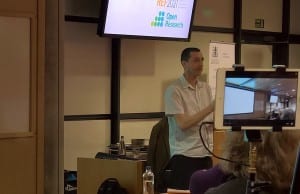Dr Julie Pattinson from the Community and Health Research Unit (CaHRU) at University of Lincoln, recently published an article in the Journal of Behavioral Addictions. The article, entitled ‘Age-related physical and psychological vulnerability as pathways to problem gambling in older adults’, was co-authored by, Dr Adrian Parke, University of Lincoln, Professor Mark Griffiths, Nottingham Trent University and Dr David Keatley, University of Lincoln. This is Julie’s third publication following her PhD thesis on ‘British older adult gambling behaviour; evaluating psychological and physical health as predictive risk for problem gambling.’
 The study background discussed clinical treatment and preventative efforts, and highlights the need to understand the pathways to late-life gambling disorder. The study assesses the association between age-related physical health, social networks, and problem gambling in adults aged over 65 years and assesses the mediating role of affective disorders in this association. In total, 595 older adults aged 64-94 years were interviewed using a structured questionnaire to assess physical frailty, geriatric pain, loneliness, geriatric depression, geriatric anxiety, and problem gambling.
The study background discussed clinical treatment and preventative efforts, and highlights the need to understand the pathways to late-life gambling disorder. The study assesses the association between age-related physical health, social networks, and problem gambling in adults aged over 65 years and assesses the mediating role of affective disorders in this association. In total, 595 older adults aged 64-94 years were interviewed using a structured questionnaire to assess physical frailty, geriatric pain, loneliness, geriatric depression, geriatric anxiety, and problem gambling.
Pathway analysis demonstrated associations between these variables and gambling problems, providing a good fit for the data, but these relationships were mediated by both anxiety and depression symptoms. The study indicated that late-life problem gambling may develop as vulnerable individuals gamble to escape anxiety and depression consequent upon deteriorating physical well-being and social support. Furthermore, when individuals develop late-life problem gambling, it is recommended that the treatment primarily focuses upon targeting and replacing avoidant coping approaches. Full text available at: http://akademiai.com/doi/pdf/10.1556/2006.7.2018.18
By Dr Julie Pattinson


















